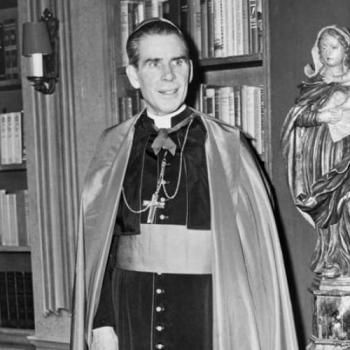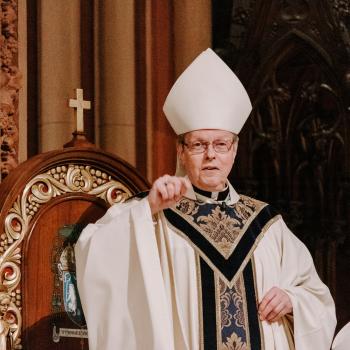Newark Archbishop John Myers’ large retirement home has gotten a lot of ink—and criticism—and the other day the man who will succeed the archbishop, Bernard A. Hebda, wrote a column in his defense:
While The Record has been quick to criticize Archbishop Myers for the expenditures related to the construction project in Clinton Township, no mention has ever been made of the far greater savings that have come from his decision to live in the Cathedral rectory on Ridge Street these past thirteen years, rather than to maintain a full-time residence of his own. I admire his willingness to forego personal privacy in order to live in community with four or five other priests and I am inspired by his commitment to live in the intensely urban setting of inner-city Newark. While Green notes my three rooms in the dormitory at Seton Hall, he never mentions that Archbishop Myers has only two in the cathedral rectory that he can call his own (a bedroom and an office) or that they are in a zip code that few would consider enviable.
My own experience tells me that the lifestyle of a bishop has little to do with square footage. I am the same bishop now as I was in northern Michigan, even though there I lived by myself in a diocesan-owned house on 40 acres with five bedrooms and three fireplaces. The demands on a bishop’s time are such that he is seldom home and rarely has time to develop attachments to creature comforts.
All in all, episcopal ministry would be a poor choice for someone seeking a comfortable lifestyle. Barring a health problem, bishops are expected to work full time until they reach the age of 75 and then to serve generously even after retirement. The hours are ridiculous and the pressures and public scrutiny immense. I chuckle when I think that when I graduated law school in 1983, as inexperienced as they come, I earned more than Archbishop Myers earns today with more than 45 years of priestly ministry under his belt and all the pressures that come with leading some 1,000 priests and deacons, close to 5,000 employees, and 1.5 million faithful.
While there are incredible spiritual benefits to episcopal service, it’s not a reasonable option for anyone looking for the proverbial Easy Street.















